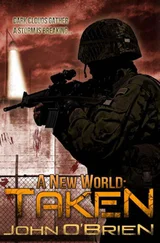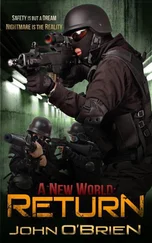Staring across the distance, Leonard thinks about sending someone aboard.
Maybe one of the smaller escorts , he thinks.
He quickly discards the idea as images enter his thoughts of the darkened interiors that Krandle’s team would face. Plus, if there was anyone onboard, they would have responded to his hail regardless of whether they could operate the systems or not. A particularly loud groan from the two ships reaches across the waters as Leonard comes to the conclusion that he is looking upon another empty vessel.
“Sir, transient noises, bearing 210 degrees, range 2,500 yards,” a call comes through to the bridge.
Leonard initiates orders for an emergency dive.
The deck is already tilting with the hull submerging below the waves as Leonard closes the hatch and descends to the control room. His heart is racing with adrenaline. He knows there was a risk bringing his boat to the surface and now, there’s the possibility that they’ve been caught.
“What’s the source?” Leonard asks, bracing himself against the steepening angle of the deck.
“Sounds like another sub blowing their tanks and surfacing, sir.”
“Surfacing? Are you sure?” Leonard queries, expecting the response to be the sound of screws or a torpedo door opening.
“Aye, sir.”
“Belay the dive,” Leonard orders.
Only a friendly sub would be surfacing under these circumstances. With few other ways of communicating, this was the quickest way of letting the Santa Fe know of their presence and friendly intentions. The deck levels as the dive is halted and they make their short way to the surface once again.
Once they broach the surface, Leonard eagerly scales the ladder, anxious to see other survivors. And not only survivors but, more than likely, fellow bubble heads. Besides the excitement, which Leonard holds close, they may have the story of what happened to the fleet and San Diego. He knows his boat is safe with the other vessel surfacing but, having had the crew set up a firing solution as part of the emergency dive, he directs that they retain that just in case. They only need to open the doors and send a series of homing torpedoes on their way.
Scrambling to the top, Leonard immediately turns his binoculars to the bearing given. Sitting on top of the surface, riding the swells, is the distinct outline of an Ohio-class submarine. Aft of the conning tower, the long deck of the hull containing the silos housing the SLBM’s (Sea-launched ballistic missiles) floats above the waves. To Leonard’s sharp eyes, the missile boat seems to be riding higher than he remembers seeing previously.
“Sir, periscope in the water, 3,000 yards bearing 280 degrees,” one of the lookouts calls.
Before Leonard can issue the order to lock onto this new target and start another emergency dive, the hydrophone operator calls, “Transient noises, bearing 280 degrees, another sub blowing its tanks, sir.”
Whipping around to the new bearing, Leonard observes the surface of the ocean bulge slightly and another conning tower emerges from the depths. Water sprays outward as the sleek outline of another LA-class fast attack submarine broaches the surface. Turning back to the missile boat, Leonard observes flashes of light emanating from the top of the conning tower.
“Signalman to the bridge,” Leonard orders.
Leonard makes way for the signalman as he climbs up. Messages are passed back and forth between the missile boat, the attack boat, and Leonard. The LA-class sub is the Jefferson City based out of Point Loma, San Diego, and the missile boat is the Maine based out of Bangor. Leonard’s boat was only recently reassigned to Point Loma from Hawaii and he has never met either captain. Rather than keep the lights flashing, and perhaps overwhelming the poor sailors trying to read and relay messages, the captain of the Maine suggests that they meet on his boat. Both boats have a means of conveyance so Leonard and the other captain agree to motor over.
Water sprays outward as the rubber craft pounds across the water. Lifting over the swells and descending into troughs, the raft jars over the wavelets like motoring over a washboard-rutted road. Occasionally, catching a wavelet just right, sea water splashes over the bow, showering the faces of those aboard. Leonard, along with Krandle and another member of the SEAL Team, wipe the salt water from their goggles.
They make their way to the Maine , its dark shape lying low on the surface. The raft bumps against the almost black anechoic-coated hull with the smaller waves slapping against the sides. Shouts echo from above as sailors toss a rope ladder and other lines down. Leonard and the others climb to the sub as the sailors hoist the rubber craft to the deck. Another such raft, carrying the captain of the Jefferson City and some of the crew, is loitering nearby to await their turn to board.
Dried off and seated in the large mess room, Leonard gratefully takes a cup of coffee. With Krandle seated at the table as well, Leonard is introduced to Captain Castagne of the Jefferson City and Captain Jorgenson of the Maine . Although outranking the other two via their dates of rank, Leonard still feels like the newcomer. The other two have had some association with the military since the downfall of civilization whereas Leonard has basically been on his own.
Feeling the outsider, Leonard relates his story in detail between sips and refills of coffee with Krandle sharing his experiences.
“Why didn’t you reply to the radio calls?” Leonard asks, finishing his story.
“We received several previous messages using an older code which we didn’t trust so opted to see how events would transpire. Trust has been hard to come by,” Jorgenson relates, casting an eye toward Castagne.
“I guess that’s understandable,” Leonard answers, knowing his own distrust and caution during his sojourn down the seaboard.
“We received the flash and open-air messages and waited. We saw your scope and silently maneuvered until we could pick up your screws on the passive array. That took some time and wasn’t easy, but once we identified your acoustics and heard you surface, we did the same hoping you’d take it as a non-aggressive sign and not fire on us. Jefferson City was standing by and ready just in case,” Jorgenson states.
Even though all know that Leonard is the ranking officer present, the conversation is spoken as equals. Each has domain over their boats and Leonard is fine with keeping it that way.
“So, what’s the story here?” Leonard asks with a nod of his head toward the carrier outside.
With a heavy sigh, Jorgenson responds, “That is a long, interesting, and ultimately sad story.”
“Although based at Bangor, we were to report to Point Loma following our patrol. We arrived offshore and were ordered to hold our position. Things seemed to be frantic onshore and we were seemingly forgotten. On the night after our arrival, we received a message to call command. I was transferred directly to Admiral Casey who filled me in on what was transpiring. It was a mess and hard to take it all in. You know by now what’s happened so I won’t go into that detail, but the admiral told us that they were in the process of gathering family and staff aboard the fleet boats currently in port.
“He had lost contact with PACOM and PACFLT, in addition to any other commands and bases, and had taken temporary command until communications could be restored. The admiral let us know that most of San Diego had been lost to the infected, although I like your night runner term better. Although we aren’t geared for escort duties, we were ordered to accompany the fleet when it sortied. The next morning, Jefferson City arrived and was issued the same orders.
Читать дальше












